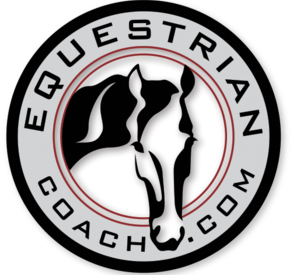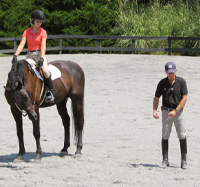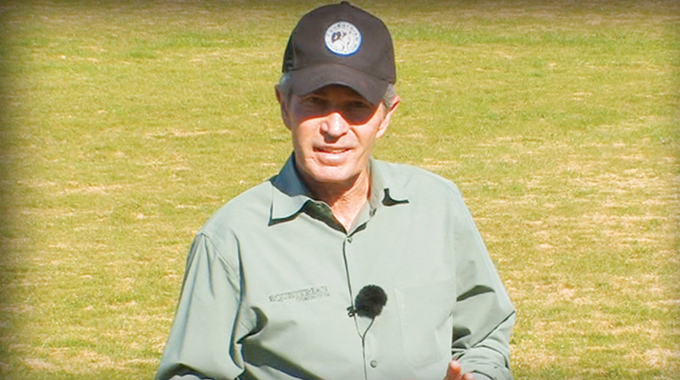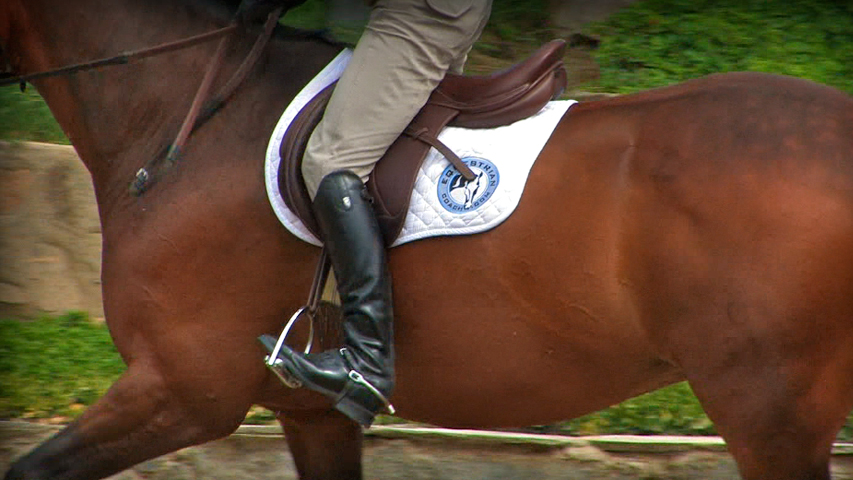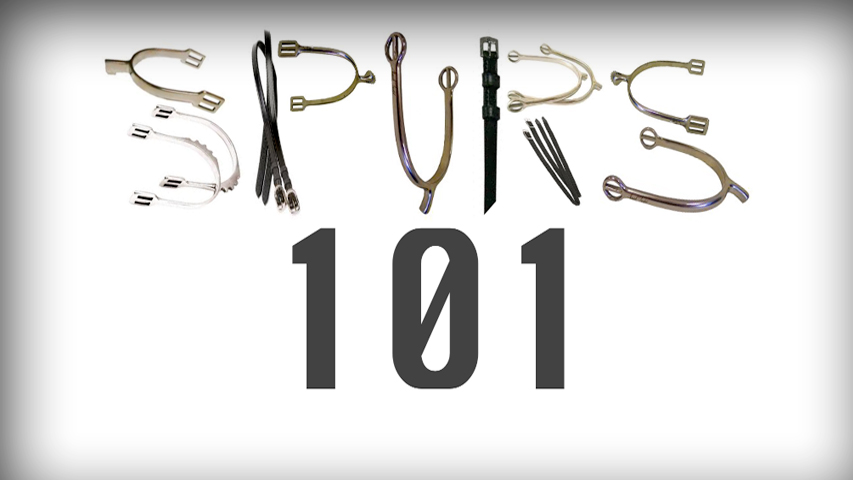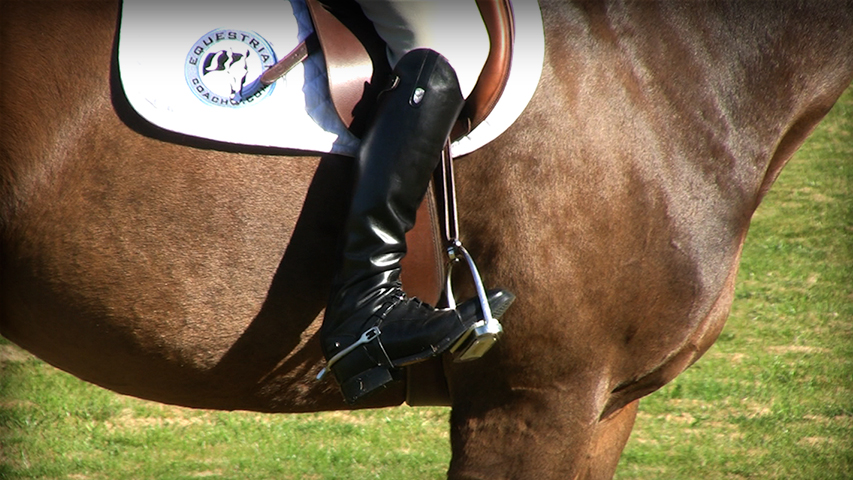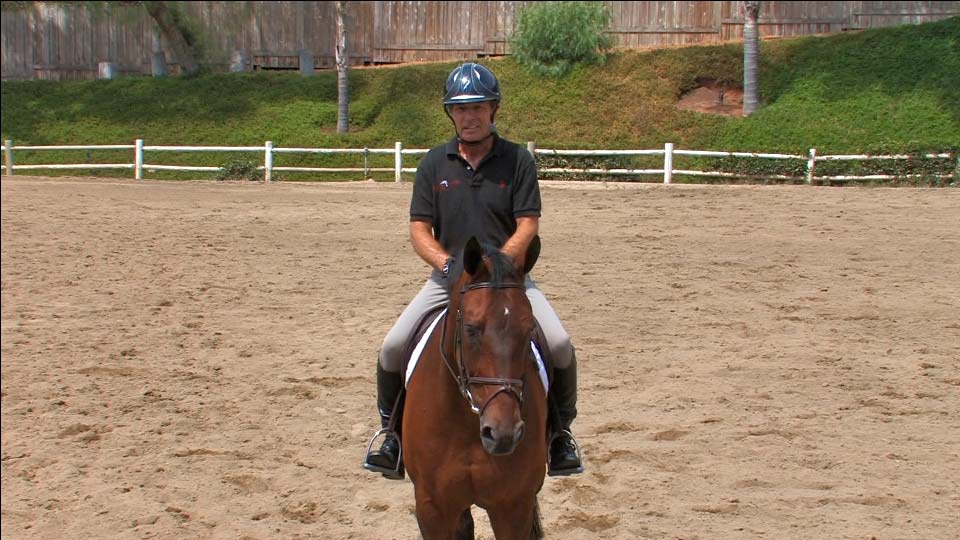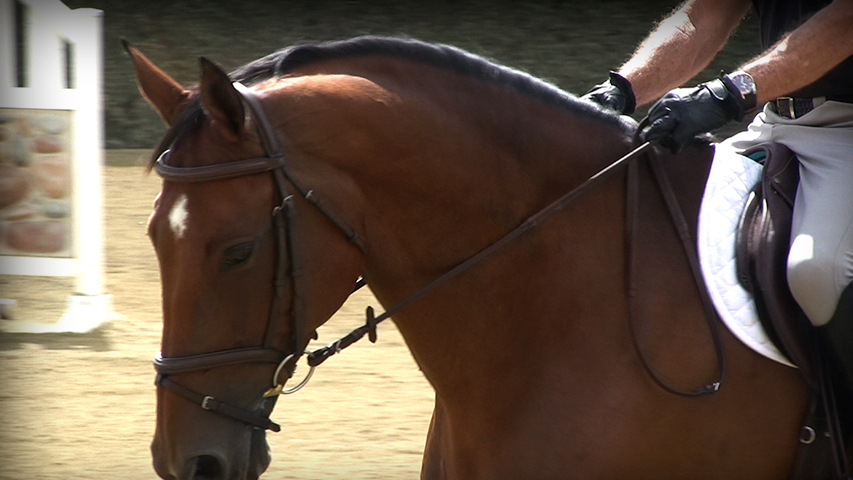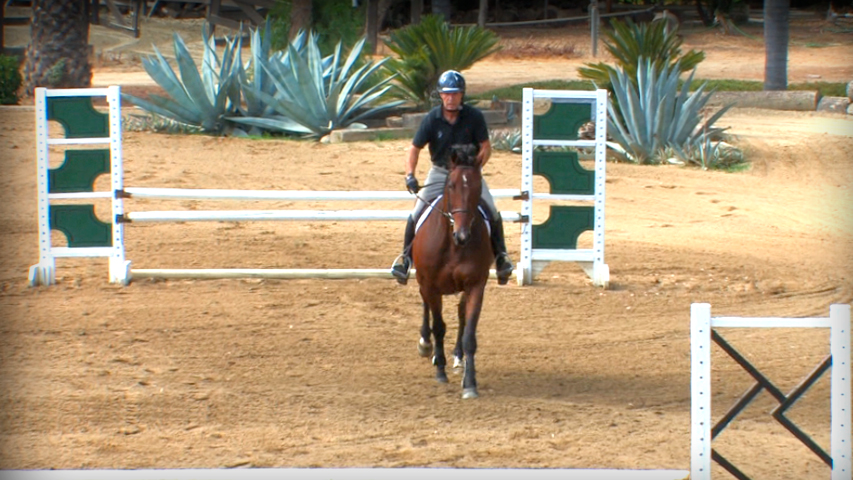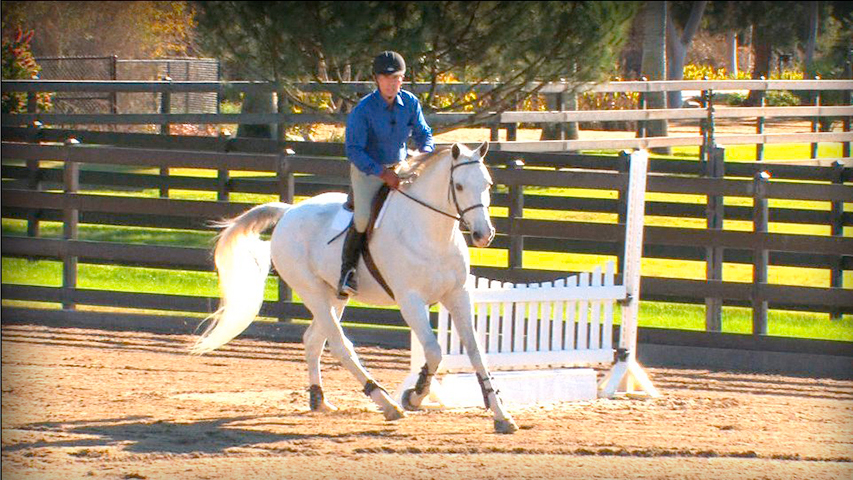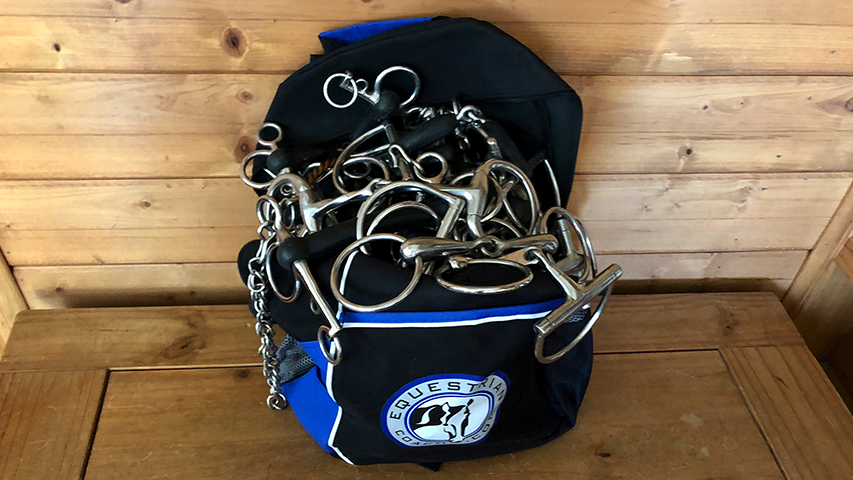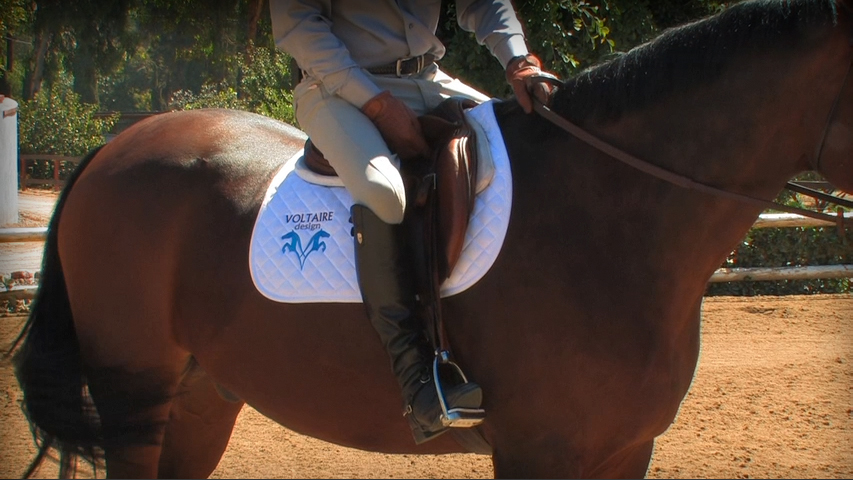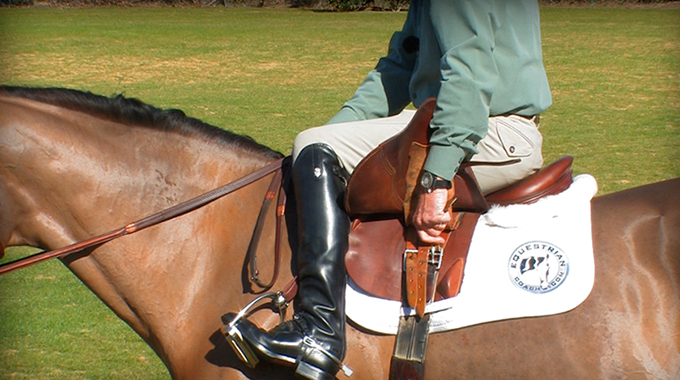Bernie
- 19 Feb, 2019
- 0 Comments
- 8 Mins Read
Bernie’s Top Ten Most Common Clinic Observations
The following describes the most common issues I encounter in clinics every week with some accompanying video topics on EquestrianCoach.com to help solve them.
Since one’s whole base of support starts with the foot and lower leg, lets start there.
#1 is lack of enough heel depth and proper placement of foot in the stirrup. So often I see heels level or barely down enough. The ankle and heel are your shock absorbers and even if you are not as flexible as the next person, you can do stretches both on and off the horse to enhance heel depth.
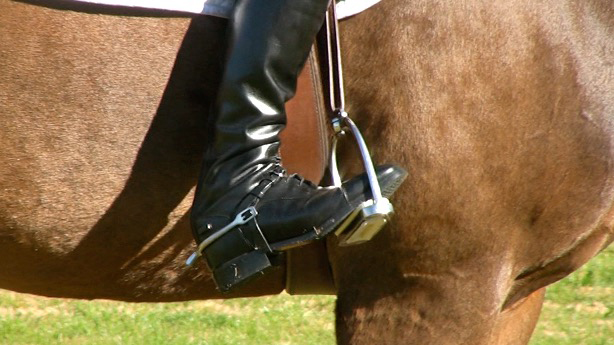
The foot should be placed just over the ball or slightly in front of the ball if you are less flexible in the ankle. Placing the foot too far in the stirrup, behind the ball of the foot, makes it more difficult to lower your heel unless you are one of those blessed individuals who have extremely flexible ankles. Most of us pressure the edge of the stirrup rather than using the stirrup as a flat platform.
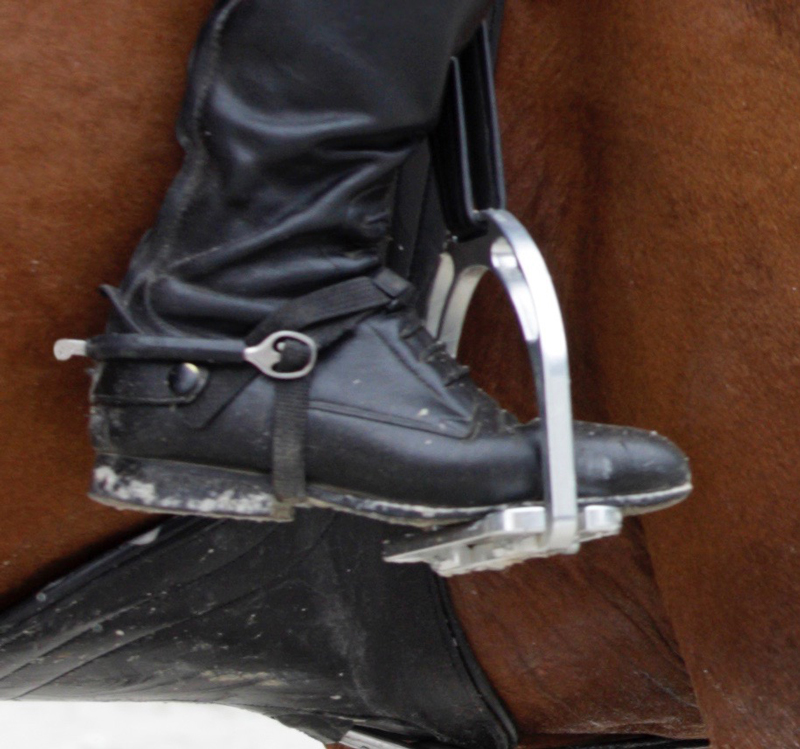
The epidemic of wide stirrup pads, now seen all over, can in some cases discourage heel depth, as some riders will stand on them like a platform, as they would on the floor.
Video Recommendations
Building Blocks to a Great Position: Part 1
Bernie Traurig
In Part 1 of Building Blocks to a Great Position, Bernie Traurig starts with proper leg position as a basis for a solid foundation in the tack. With demonstrations by his daughter, Natasha, this video outlines exercises that enhance proper techniques.
Running Time: 19 minutes and 57 seconds
and
Exercises To Increase Heel Depth
Bernie Traurig
“Put your heels down…” this is one of the first things every rider is taught because it is so essential to proper position and effective riding. In this topic, Bernie focuses on ways to increase and maintain deep heels every day.
Running Time: 6 minutes and 32 seconds
#2 The proper placement of spurs today seems to have crept upwards, way above the spur rests. To some degree it’s perhaps due to the snaps on some boots and half chaps that seem to easily place the spur above it. On the other hand, it seems also difficult to keep the spurs in place and not too low. Spur placement is so important as an aid to one’s leg. Too high and it’s hard to use you legs without the spur inadvertently poking the horse. Too low and it’s totally ineffective.
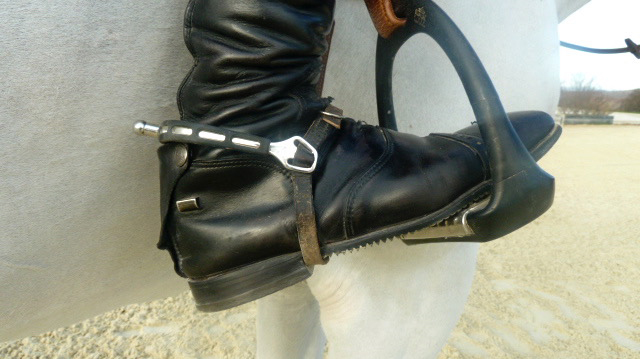
Video Recommendation
SPURS 101
Bernie Traurig
In this topic Bernie offers his personal philosophies on spurs. He discusses the proper placement of your spurs and the appropriate choice of spur to use, taking into consideration your horse’s sensitivity level. Find out his favorites as well as the ones you should avoid using all together.
Running Time: 7 minutes and 53 seconds
#3 The proper lower leg position! Mostly I see legs too far back. The leg supports the upper body and one inch to far back or forward makes a huge difference. Normally the stirrup leather being perpendicular to the ground, is a good indicator of a proper leg position.

The position, just toward the back edge of the girth is one’s default position. Lack of mobility of the lower leg is seen way too often. A leg that affects the haunch must move back slightly for one example. A leg to stop ourselves from being a missile should a horse stop, or to maintain stability in the tack stopping or slowing down a really strong horse must be able to move slightly forward in a braced position.
Video Recommendation
Gaining Lower Leg Mobility
Bernie Traurig
Here’s a simple, but seldom practiced technique to improve lower leg functionality and position. In this topic, Bernie demonstrates an exercise he uses to encourage stability in the tack and to prevent the toppling effect of an improperly placed or weak lower leg.
Running Time: 4 minutes and 21 seconds
#4 Horses behind the leg, dull to the leg aids. Legs that constantly rub and nag the horse every stride to go forward. The result of this is creating the dull insensitive horse and irritations on the horse’s sides.
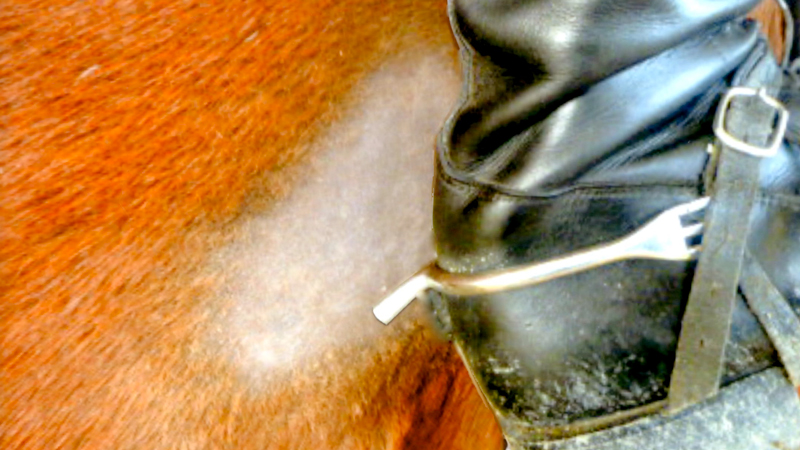
Most riders who do this lack the philosophy and correct technique of how to use their legs properly and how and when the different degrees of correction should be used.
Video Recommendation
Getting And Keeping The Dull Horse In Front Of Your Leg
Bernie Traurig
Is your horse dull to your leg? Are you constantly nagging your horse with your spur? Are there worn patches on your horse’s side from heels that are constantly asking for forward momentum? Bernie has the solution.
Running Time: 15 minutes and 8 seconds
#5 A lack of “following arms” in the walk, and especially the canter, gallop and jump. This has to be a major focus of ones riding. Your arms should elastically follow the natural gestures of the neck and head during the walk, canter and gallop.
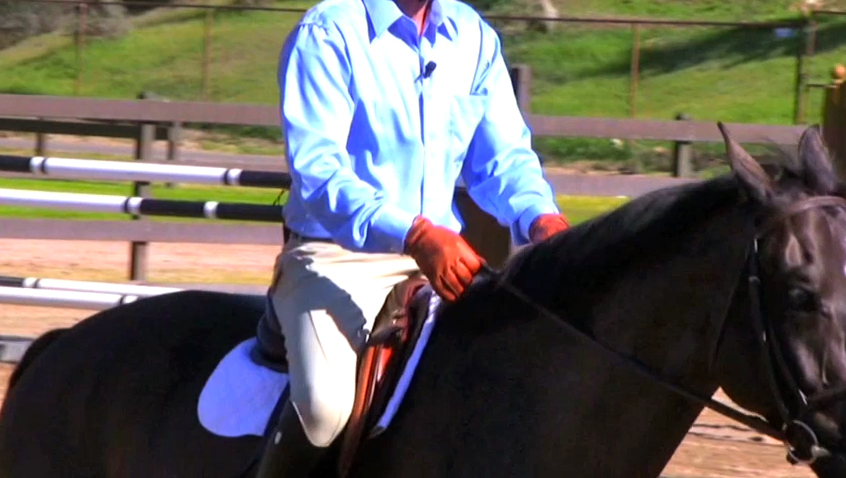
Your connection with your hands and arms, if in opposition with that movement, will be a direct blow on the most sensitive part of the horse, his mouth.
Video Recommendation
Developing Good Hands
Bernie Traurig
In this topic Bernie discusses the vital role good hands play in the communication between rider and horse. Tactful, sensitive hands that are used with feeling can be developed using the exercises Bernie presents here.
Running Time: 11 minutes and 10 seconds
#6 Misunderstanding the basic primary aid, the opening rein, to maintain a straight line between two jumps. When I ask the question “What is the primary aid to maintaining a straight line between two jumps?” I invariably get the answer “Leg.” Although leg is definitely a back up assuming the horse reacts to one’s leg aid, the number one aid is the opening rein. Turn the head of the horse and they will most likely follow it.
Video Recommendation
Straight And Simple
Bernie Traurig
Confused about how to keep a straight track in lines? Here’s a quick and easy fix from Bernie that will get you and your horse headed straight down the middle of those lines.
Running Time: 4 minutes and 16 seconds
#7 Riders that look way over and beyond the top rail of the jumps on their approach, sometimes 4-5 strides out. It is extremely difficult to find a correct take off spot, especially with less educated eyes, unless you focus on the top rail until the take off (when the jump disappears between the horses ears), or perhaps a stride early if it were a bending line. If you look ahead at the take off, at the latest, you should not fear the dreaded habit of “looking down”.
Video Recommendation
Looking for the Distance
Bernie Traurig
Bernie travels far and wide as a clinician and encounters a wide spread confusion amongst his students – where to look to find a distance to a fence. In this topic, he experiments with various techniques for finding the distance and puts an end to the mystery.
Running Time: 8 minutes and 30 seconds
#8 A lack of basic schooling techniques for the horses that are strong in lines and after the end jumps.
Video Recommendation
Fundamentals of Flatwork – Part 1 – Basic
Bernie Traurig
The first of the series, this video outlines a simple, progressive method of flatwork for all jumping disciplines. It focuses on the training of a young or inexperienced horse with the aim to achieve obedience to light rein and leg aids, and assumes the rider is familiar with the proper techniques of riding and jumping. But you do not have to be a highly experienced or seasoned rider because Bernie’s strategies are clear, straight-forward, classic and timeless. The Basic level highlights his favorite exercises that can be incorporated into anyone’s training program.
Running Time: 46 minutes and 25 seconds
#9 This brings us to one of the biggest issues I encounter – correctly bitting the horse, especially for schooling over fences. I always say, school in the mildest bit suitable for the horse, considering the rider.

Video Recommendation
Bernie’s Big Bag of Bits
Bernie Traurig
Does the sheer volume and variety of bits adorning tack shop walls today overwhelm you? Would you like to have a bit selection guideline that follows classical principals with your horse’s comfort at the forefront? If you answered yes to either of these questions, Bernie has pared down a list of his favorite go-to bits that will simplify and positively influence your bitting choices. As a clinician, Bernie travels around the country and abroad literally lugging around a bag of bits. Extra baggage fees aside, he finds that having his favorite bits at hand, ringside to be invaluable. Time and again he has come to believe that experimentation is key as long as you are listening to your horse’s sometimes subtle, sometimes obvious acceptance of and/or objection to the mouthpiece.
Running Time: 6 minutes and 46 seconds
#10 Riders without knowledge of proper adjustment of stirrups, relying on a ground person to adjust them. That said, I am very understanding of this dilemma today, due to the difficulty one has moving the fat leathers constricted by the very tight stirrup bars against the saddle. Here are two video tips to help this issue.
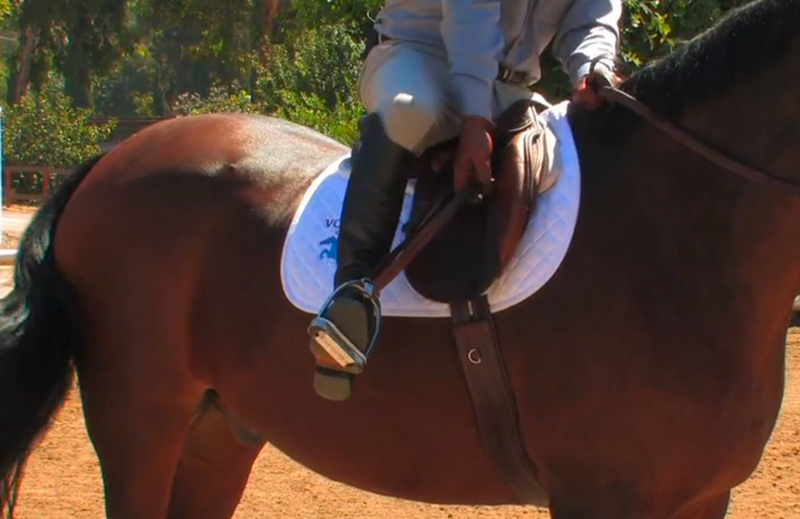
Video Recommendations
Adjusting Stirrups
Bernie Traurig
Here’s a slick tip brought to our attention by one of our clever subscribers, Wendy Hunt. Do you find it difficult to adjust your stirrups while mounted? Find out how this simple technique is a brilliant solution.
Running Time: 4 minutes and 58 seconds
and
Safety First: Stirrup and Girth Adjustments
Bernie Traurig
Bernie demonstrates the proper techniques for stirrup & girth adjustments.
Running Time: 4 minutes and 58 seconds
